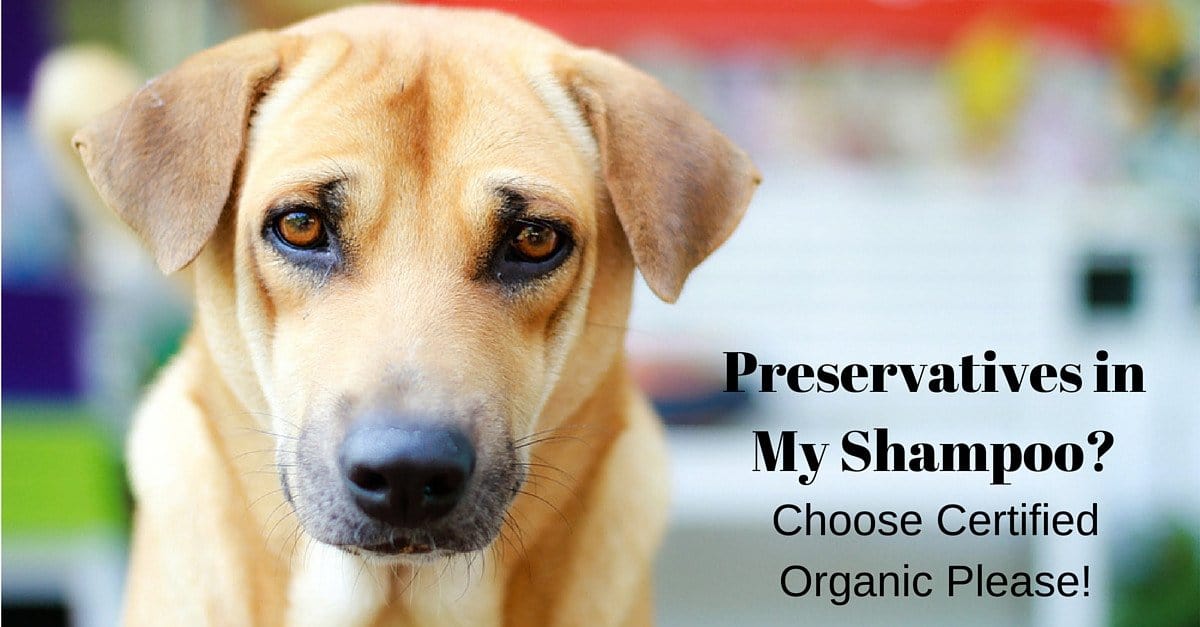Lesson 2: Preservatives in Pet Shampoo
Lesson 2 looks at preservatives - the chemical substances used to prevent food or other materials (such as your pet’s shampoo) from going bad.
Unless you make a product at home and kept it refrigerated, you do want “something” in your product to keep it from growing bad stuff. Otherwise, you and your pet could get sick from what is growing in it (mold, fungus, yeast, or bacteria).
Let’s look at the difference between USDA certified organic dog shampoo and other dog shampoo.
| Certified Organic Dog Shampoo | Other Dog Shampoo |
|
Use natural anti-oxidants (to keep oils from going rancid) and essential oils (for anti-microbial and anti-fungal properties).
|
Preservatives usually one of four types:
|
Let’s break down the safety of both the organic approved ingredients and the non-organic approved ingredients.
|
Certified Organic Dog Shampoo |
||
|
Name |
What to Look for on the Label |
Concerns |
|
Rosemary Extract |
Rosemary extract |
No known health issues. |
|
Grapefruit Seed Extract |
Grapefruit seed extract |
There are also studies that show impure grapefruit seed extract (low grade) that are contaminated with 1,4-dioxane. |
|
Vitamin E Derivative - Tocopherol |
Natural Vitamin E, Vitamin E, Tocopherol, T50 Vitamin E Oil, gamma tocopherol |
There are a few studies that link tocopherol (low grade - inexpensive) to prostate cancer; but, long term studies have not been completed to validate these links |
|
Other Dog Shampoo |
||
|
Name |
What to Look for on the Label |
Concerns |
|
Formaldehyde releasers |
You won’t see “formaldehyde” on a label. Instead, you will see derivatives of formaldehyde that release small amounts of preservative over time. 2-bromo-2-nitropropane-1,3-diol (bromopol) Doazolidinyl urea DMDM Hydantoin Imidazolidinyl urea Quaternium-7, -15, -31, -61 Sodium hydroxymethylglycinate |
Preservatives that release formaldehyde even at low levels (250 parts per million) may cause health concerns. Formaldehyde is considered a known carcinogen. Studies have demonstrated that formaldehyde can be absorbed through the skin. Formaldehyde may also cause skin reactions and rashes. |
|
Isothiazolinones |
Methylisothiazolinone and Methylchloroisothiazolinone |
Allergies that cause itchy/red skin, organ system toxicity, neurotoxicity. These can break down into nitrosamines in the right conditions (like pH of 3-5). Nitrosamines are linked to cancer. |
|
Sodium Benzoate |
Sodium benzoate |
On its own, there is nothing in sodium benzoate that would cause a health concern. When sodium benzoate and citric acid and/or ascorbic acid (vitamin C) are mixed together they may become benzene - a cancer causing chemical associated with leukemia and other blood disorders |
|
Parabens |
Harder to find as there are as many names for parabens as there are breeds of dogs. The most commonly used parabens are butylparaben, methylparaben, and propylparaben. The less common names look more like “4-hydroxy-methyl ester benzoic acid” or “sodium salt”. |
Parabens are thought to be “stored” in the body and have a cumulative effect posing health risks such as estrogen disruption, breast cancer, and reproductive issues. |
As we learned in our last article - the word “natural” is not regulated and as a result, manufacturers have adopted the word as a marketing term. It means manufacturers can charge more for the same product by adding the word “natural” to the label or marketing materials.
Using preservatives as a way to distinguish between a safe and non-toxic dog shampoo and a “natural” imposter is effective. If the label simply says “Preservatives” don’t put it in your shopping cart. Chances are they aren’t disclosing it because it is one of the formaldehyde releasers or they are using a paraben.
Will your dog get cancer because formaldehyde, benzene, or parabens are in their shampoo? We don’t know the answer to that question as there are no long term studies that look at exposure to normal use of products. We can say that these ingredients have been linked to health issues such as skin irritation to cancer and there are viable alternatives.
Go to Lesson 3 of buying a truly natural dog shampoo.





